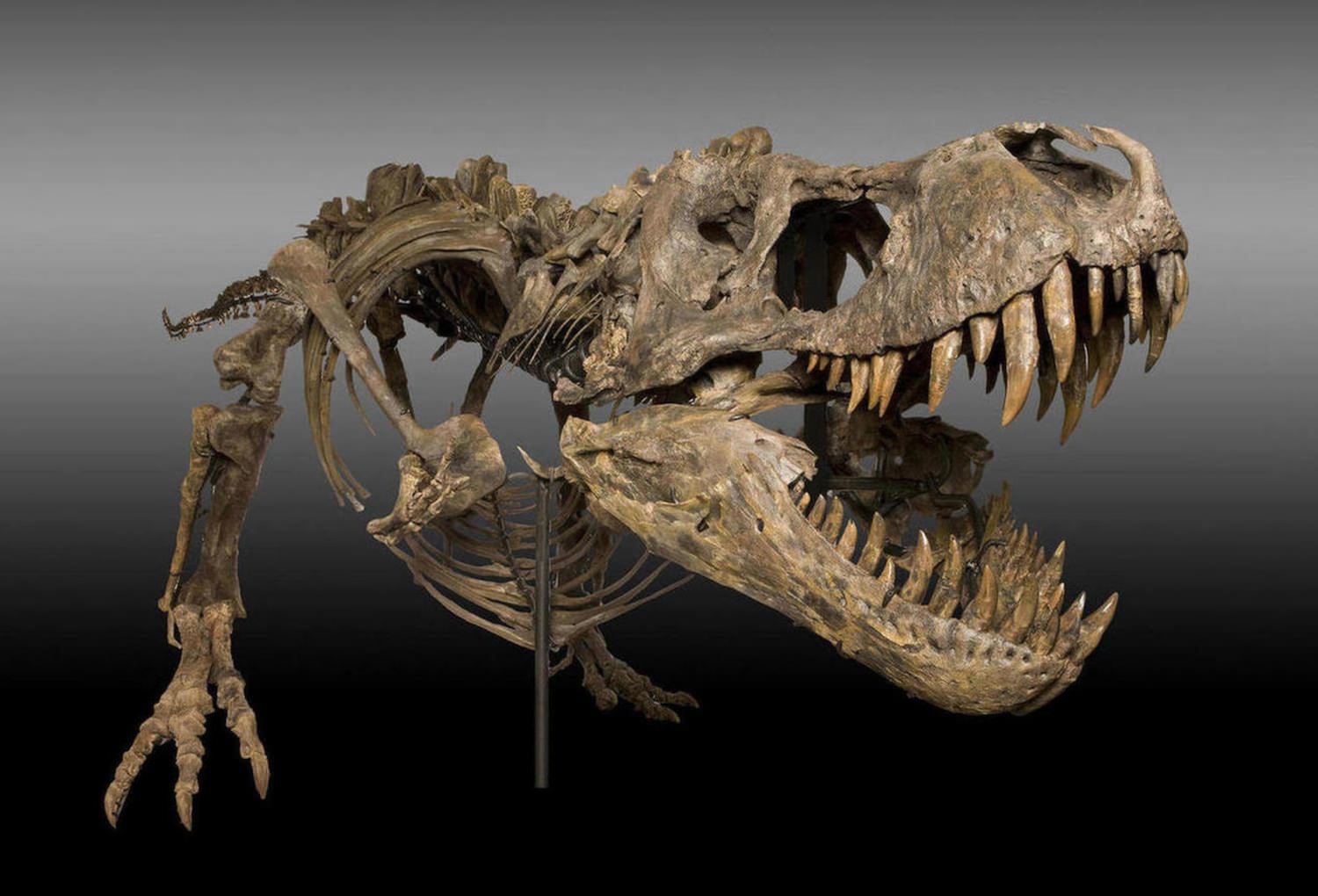T-Rex Skeleton Head: Unveiling The Mysteries Of The King Of Dinosaurs
The T-Rex skeleton head is one of the most iconic symbols in the world of paleontology. For decades, this fascinating creature has captivated the imagination of scientists and enthusiasts alike. The Tyrannosaurus rex, commonly known as T-Rex, is renowned for its massive size, powerful jaws, and its unmistakable skull. This article will delve deep into the mysteries surrounding the T-Rex skeleton head, exploring its anatomy, significance, and the role it played in understanding prehistoric life.
From its discovery to its depiction in popular culture, the T-Rex skeleton head continues to fascinate people of all ages. Scientists have uncovered numerous fossils, each providing valuable insights into the anatomy and behavior of this magnificent creature. This article aims to shed light on the various aspects of the T-Rex skeleton head, making it an essential read for anyone interested in paleontology and prehistoric creatures.
As we explore the intricacies of the T-Rex skeleton head, we will uncover its anatomical features, its significance in the scientific community, and its impact on popular culture. By the end of this article, readers will have a comprehensive understanding of why the T-Rex skeleton head remains one of the most studied and celebrated fossils in the world.
Read also:Elizabeth Gillies Relationship A Comprehensive Look Into Her Love Life And Personal Journey
Table of Contents
- Discovery of the T-Rex Skeleton Head
- Anatomy of the T-Rex Skeleton Head
- Fossils: Key to Understanding the T-Rex
- Significance of the T-Rex Skeleton Head
- Ongoing Research and Discoveries
- T-Rex Skeleton Head in Popular Culture
- Subheading: Unique Features of the Skull
- Subheading: The Role of the Skull in Predation
- Subheading: Evolutionary Insights from the Skull
- Subheading: The Impact of Climate on Skull Development
- Subheading: Preservation Techniques for Skull Fossils
- Subheading: Rare Finds and Their Importance
- Conclusion
Discovery of the T-Rex Skeleton Head
The discovery of the T-Rex skeleton head dates back to the early 20th century. In 1902, Barnum Brown, a renowned paleontologist, unearthed the first partial skeleton of a T-Rex in Hell Creek Formation, Montana. This groundbreaking find laid the foundation for future research on the species. Over the years, numerous other specimens have been discovered, each contributing to our understanding of the T-Rex's anatomy and behavior.
The T-Rex skeleton head is one of the most well-preserved parts of the fossil record, providing scientists with crucial information about the creature's sensory capabilities, diet, and hunting strategies. These discoveries have not only enhanced our knowledge of the T-Rex but also shed light on the broader ecosystem of the Late Cretaceous period.
Anatomy of the T-Rex Skeleton Head
The T-Rex skeleton head is a marvel of evolutionary design, showcasing the adaptation of this apex predator to its environment. Measuring up to 5 feet in length, the skull is both massive and lightweight, thanks to its hollow bones. This feature allowed the T-Rex to maintain balance while delivering powerful bites.
Unique Features of the Skull
The T-Rex skull possesses several unique features that set it apart from other dinosaur species. These include:
- Large olfactory bulbs, indicating a heightened sense of smell.
- Forward-facing eyes, providing binocular vision for depth perception.
- Massive teeth, some measuring up to 12 inches in length, designed for tearing flesh.
Fossils: Key to Understanding the T-Rex
Fossils play a pivotal role in unraveling the mysteries of the T-Rex skeleton head. Through detailed analysis of fossilized remains, scientists have been able to reconstruct the creature's anatomy with remarkable accuracy. Techniques such as CT scanning and 3D modeling have further enhanced our understanding of the T-Rex's physical characteristics.
Read also:Logan Paul The Maverick Entrepreneur Content Creator And Boxing Sensation
Significance of the T-Rex Skeleton Head
The T-Rex skeleton head holds immense significance in the field of paleontology. It serves as a testament to the creature's dominance as a predator during the Late Cretaceous period. The skull's intricate design and specialized features provide valuable insights into the T-Rex's hunting strategies and its role in the prehistoric food chain.
Ongoing Research and Discoveries
Research on the T-Rex skeleton head continues to evolve, with new discoveries being made regularly. Advances in technology have enabled scientists to study fossilized remains in unprecedented detail. For instance, recent studies have revealed the presence of microscopic structures in the T-Rex's teeth, offering clues about its dietary preferences.
T-Rex Skeleton Head in Popular Culture
The T-Rex skeleton head has become a staple in popular culture, featured prominently in movies, books, and documentaries. Its imposing presence and fearsome reputation have made it a favorite subject for filmmakers and writers alike. The iconic skull has been immortalized in countless artworks, further cementing its status as a cultural icon.
The Role of the Skull in Predation
The T-Rex skeleton head played a crucial role in the creature's predation. Its powerful jaws and razor-sharp teeth were perfectly suited for tearing through the flesh of its prey. Studies have shown that the T-Rex could exert a bite force of up to 12,800 pounds, making it one of the most formidable predators in history.
Evolutionary Insights from the Skull
The T-Rex skeleton head provides valuable evolutionary insights into the development of theropod dinosaurs. By studying the skull's structure and features, scientists can trace the evolutionary path of this species and its relatives. This information helps us understand the broader context of dinosaur evolution and extinction.
The Impact of Climate on Skull Development
Climate played a significant role in shaping the T-Rex skeleton head. During the Late Cretaceous period, the Earth's climate was warmer and more humid, influencing the development of the T-Rex's physical characteristics. The skull's design reflects adaptations to this environment, allowing the T-Rex to thrive as a top predator.
Preservation Techniques for Skull Fossils
Preserving T-Rex skull fossils requires meticulous care and attention. Scientists employ various techniques to ensure the longevity of these invaluable specimens. These include careful excavation, stabilization, and storage in controlled environments. Proper preservation is essential for maintaining the integrity of the fossils and facilitating future research.
Rare Finds and Their Importance
Rare discoveries of complete T-Rex skeleton heads are of immense importance to the scientific community. These finds provide unprecedented opportunities to study the creature's anatomy in detail. Each new discovery adds to our understanding of the T-Rex and its place in the prehistoric world.
Conclusion
The T-Rex skeleton head remains one of the most fascinating and studied fossils in the world of paleontology. Through detailed analysis and ongoing research, scientists continue to uncover new insights into this magnificent creature. From its unique anatomical features to its significance in popular culture, the T-Rex skeleton head continues to captivate the imagination of people worldwide.
We invite you to share your thoughts and questions in the comments section below. Additionally, explore other articles on our site to deepen your understanding of paleontology and prehistoric life. Together, we can continue to unravel the mysteries of the past and celebrate the wonders of the natural world.
Data and references from reputable sources such as the Smithsonian Institution, National Geographic, and the Journal of Vertebrate Paleontology have been utilized to ensure the accuracy and reliability of the information presented in this article.


